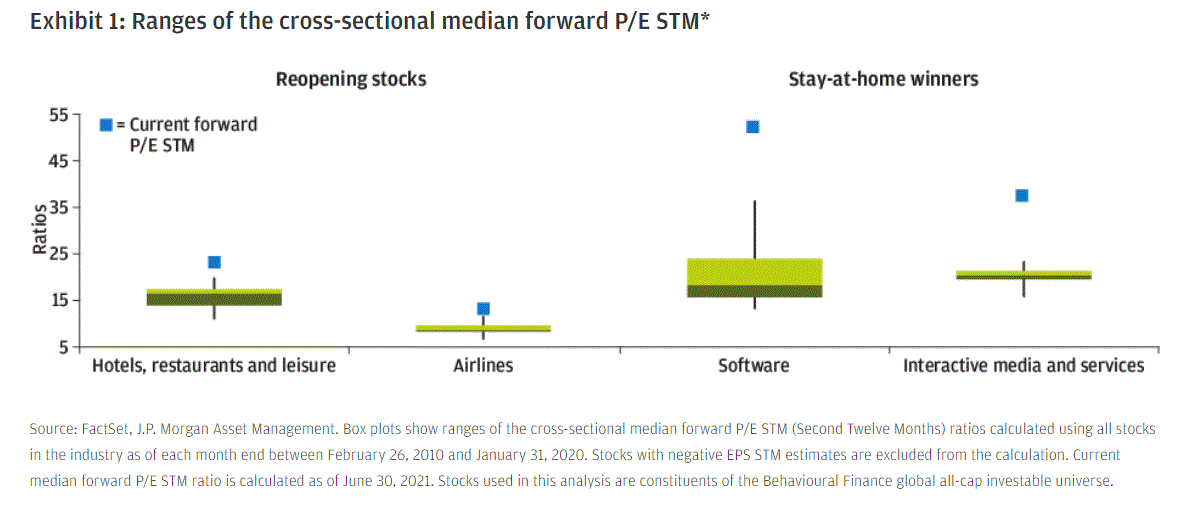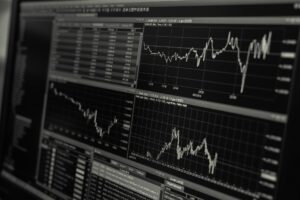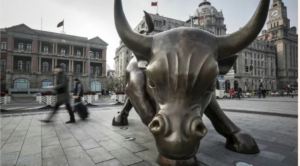JPMorgan hæfter sig ved, at virksomhederne har rekordindtjening overalt i verden, men at aktieniveauerne er kommet så højt op, at det dæmper entusiasmen. De fleste af JPMorgans analytikere venter et marked med kun et gennemsnitsligt afkast. Derfor mener de, at stock-picking er nødvendig igen, og de tror først og fremmest på value- og højkvalitetsaktier. Finansaktier og nogle industriaktier af høj kvalitet er fortsat blandt bankens anbefalinger. Analytikerne mener, at der er for megen optimisme i el-bilsektoren, omend de ser muligheder blandt en del underleverandører til el-biler. Mange af de selskaber, der led under pandemien, er kommet på niveau, mens der stadig er muligheder i mange af de selskaber, der klarede sig godt ved hjemme-arbejdet, f.eks. blandt software-selskaber.
Taking stock
In Brief
- Corporate profits continue to recover at an impressive pace, already breaking records around the world. The gains are very broad by region and industry, and we expect robust growth in 2022 as well.
- But high valuations, especially for fast-growing companies, restrain our enthusiasm. Most of our team expect average returns from markets, but we see good opportunities for stock selection, especially for value- and quality-oriented investors. Financials and high-quality industrials remain featured in many of our strategies.
- Three themes emerged from our recent Investors Quarterly:
– Many Asian stocks have become more attractive after recent underperformance.
– Investor optimism toward companies that have yet to earn a profit may be misplaced.
– Even if the most optimistic forecasts for electric vehicle (EV) growth are too aggressive, we anticipate significant opportunities for a broad range of EV suppliers.
The biggest surprise has been the rapid recovery in the worst-hit industries. That reflects generous monetary and fiscal policy, strong financing conditions and, of course, the effectiveness of coronavirus vaccines. Since our last Investors Quarterly, three months ago, our near-term expectations have again been revised higher, with the financial sector and industrial companies once again the biggest drivers. But the gains are very broad-based by industry and geography.
This quarter will mark the peak rate of change in profits, but we remain pretty optimistic about the outlook. Monetary policy is generally still very accommodative, although financial conditions have tightened mildly in China. Consumers are spending freely, and companies seem very able to pass on higher costs.
But with prices again moving higher, many stocks seem expensive from the perspective of our research team. An expected decline in valuations offsets part of the anticipated profit growth over the next five years, and our overall return expectations are modest. Although we expect the fundamentals of profit growth to remain strong, some caution is probably warranted in the near term after the tremendous gains made over the past year.
The feverish speculative mood apparent in the early months of the year has cooled somewhat. Special purpose acquisition companies (SPACs) have fallen from favor in the U.S., and the “meme” stocks pursued aggressively by individual speculators have dropped again in recent weeks.
But equity funds continue to attract strong inflows around the world.
As the momentum of the U.S. economic recovery has reached a peak, the fast-growing companies that have dominated returns over the last decade have again led the market, driving valuations back to extreme levels in some cases.
Many of the recently popular beneficiaries of the reopening look fully priced, too, including many airlines and hotels (Exhibit 1). Investors have shown a strong appetite for taking risk in both new growth companies and the most beaten-down casualties of the COVID-19 crisis.
Meanwhile, the virtues of high quality, steady-growth stocks have been overlooked, and on many metrics quality as an investment attribute is looking attractively priced.





